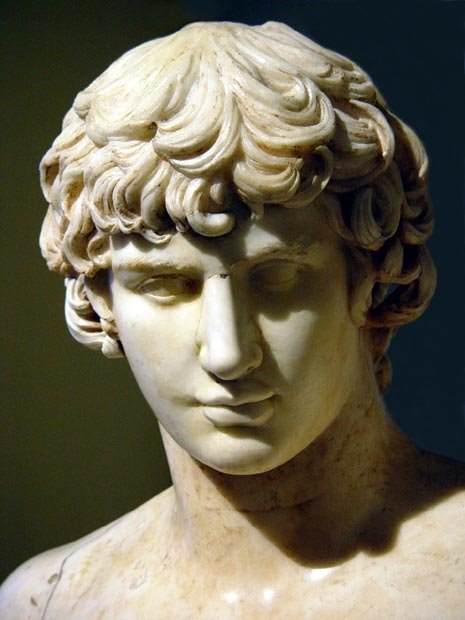I've been wrestling with exactly where my Act breaks occur since I began this third version of the first draft. Up to now I have interpreted my current position as early in Act II, with a lengthy Act I behind me.
However, I considered Alicia Rasley's comments in one of her articles (you can find them by following the link to must-read articles in the sidebar), and have reconsidered. She states that modern fiction tends to have a very short first act, maybe only one or two chapters long, before moving right into the protracted second act.
I shortened my first act in this third rewrite, shortening it to two short chapters. However, I felt that was not long enough, so I have been thinking that somehow some of what has occurred since is really Act I material. It's not. My first act is just short in this first draft, and I'm not in the early part of Act II, I'm coming up fast on the mid-point of the novel.
It makes sense. It's also nice to realize I really am farther than I was thinking, once I redraw the lines separating each act. It brings the word count a little more in line with what it should be.
It's interesting that in spite of having a solid outline, what I have written meanders a lot while still fulfilling the key plot points, just not as I had envisioned. So, the story idea is one thing, the story reality (in this version at least) is another, yet the two are complementary.
Back to work. Er, back to exploration!
Adrian

6 comments:
I see most of my novels as five act structures (except The Charioteer and Eagle of the Sea which follow the Hero's Journey pattern)- I've read too much Schiller and Racine, lol.
The reason is probably that I like the approach to have a MC-representant each for both parties, which lends to the five act structure more easily. Fe. in Caledonia Defiant I have two plotlines, the one of Talorcan, and the one of Horatius Ravilla which will meet once, get separated again and will meet a second time. It's more complicated than a simple antag or villain relationship (those would be Muirtholoic and Valerius Messala). The same structure I'm going to use in the Visigoth novel where the MCs are half-brothers on different sides, and one of the antags starts out as Idamantes' lover. In case of A Land Unconquered it's more complicated because the MCs' plotlines start together and then get separated and the MCs get thrown into different parties, but the double plotline still works better with a five act schema.
It's good to read that you are feeling better and back to work on your novel.
With Aloha,
Sue
I tend to have a really long first act and then get lost the moment I start to work on the second.
This entry gave me something to think about.
Thank you each for your comments!
Gabriele, als Student in einem meiner vorigen Leben habe ich auch einige Theaterstuecke von Schiller gelesen, die mir sehr gefallen habe. Als Schriftsteller habe ich aber leider nichts ueber die 5-Akt-Struktur gelernt, wie ich sie selber benutzen koennte. Was ich von der 3-Akt-Struktur verstehe, habe ich in grossen Mengen aus Buechern ueber Hollywood-Drehbuecher gelernt (Mittelpunkt, Wendepunkte, usw.). Ich bin sehr neugierig, wie man (oder Frau) die 5-Akt-Struktur benutzt. Gibt es Websites mit dieser Auskunft? Koenntest du einige Buecher empfehlen? Danke im voraus.
[For the non-German-speaking, I asked Gabriele if she can recommend websites or books that detail how a writer can use the five-act structure.]
Susan, very nice hearing from you! Yes, I'm much better now and have written a bunch this past week. Good to be back at it and enjoying it. Aloha!
Romancewriter, your situation sounds a lot like what I experienced for many years as I struggled to complete manuscript after manuscript without success. I always got lost in the second act and could never bridge the middle. The articles by Alicia Rasley really helped me last year, and many books on writing also have this information. Even though I knew the stuff, it still hadn't really sunk in. I had to internalize it, train myself to think in story terms, in three-act-structure terms, in order to finally see my way through all the plot details in my head to an underlying pattern that worked, that would carry me through the writing process. At least I can say after years of struggle that I finally got there! There is hope! Check out the articles, if you haven't already ("Must-Read Articles" link on the main page.) Good luck with your plotting!
Adrian, ich denke, das Standardbuch ist immer noch Volker Klotz, Geschlossene und offene Form im Drama, München 1969 (10. revidierte Auflage 1980).
Ich habe mich allerdings seit etwas zehn Jahren auf mittelalterliche Literatur spezialisiert, und bin nicht mehr auf dem laufenden was Neuerscheinungen in der modernen Literaturwissenschaft anbetrifft.
Tausend Dank, Gabriele! Ich habe auch eine Internetsuche gemacht, und einige Sites gefunden, die es klarer gemacht haben. Danke nochmals!
Post a Comment